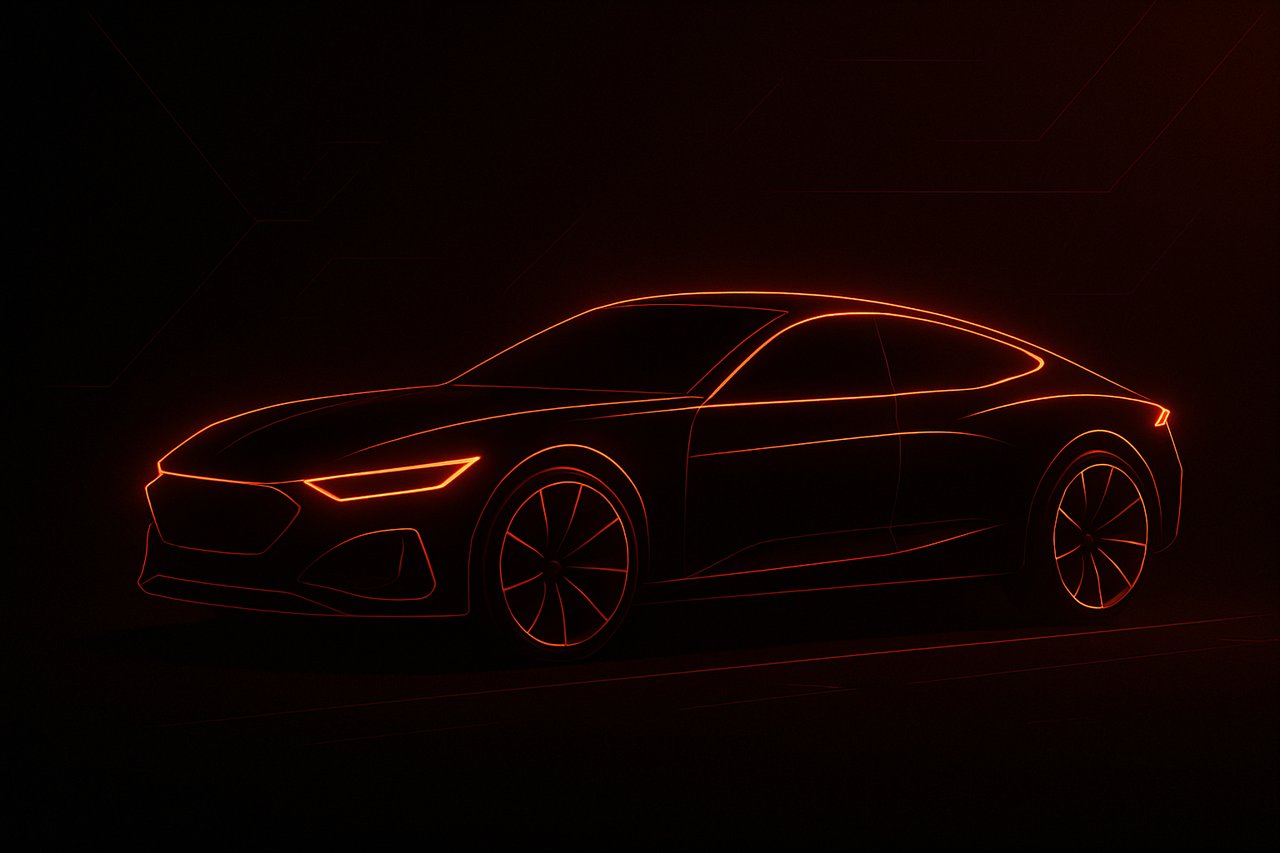The used-car market in 2025 is riding out a long-awaited correction. After years of dizzying price climbs triggered by pandemic supply shortages, wholesale values have begun to soften as inventories rebuild. In early August 2025, the Manheim Used Vehicle Value Index — a widely watched gauge of wholesale auction prices — stood around 207.4, down roughly 0.5% from June but still up nearly 3% from a year earlier. The decline may look small, but it marks a turning point: the steep month-over-month drops seen in late 2022 and early 2023 have given way to a gentler summer slide, suggesting the market is normalizing rather than collapsing. For consumers hunting for a bargain, understanding this “softening” is essential. Prices remain high by historical standards, and financing costs remain elevated, but the negotiating leverage is slowly shifting back toward buyers.
Understanding the Used-Car Market
To appreciate why values are easing only modestly, it helps to unpack how the used-vehicle ecosystem works. When you trade in or sell a car, it often ends up at a wholesale auction like Manheim or ADESA. Dealers purchase these vehicles based on their projected retail margins, recondition them, then put them on the lot. Over the past three years, supply shocks — semiconductor shortages, factory shutdowns, and rental fleets retaining vehicles — severely constricted the flow of trade-ins and off-lease vehicles. Dealers bid aggressively to secure inventory, pushing wholesale prices to record highs. With new-vehicle production now steadily improving and rental companies resuming normal fleet cycles, the auction lanes are busier. That doesn’t mean a flood of cars; supply remains below pre-pandemic norms, but it’s no longer evaporating week-to-week.
The used-car market is also heterogenous. “Used cars” encompasses everything from 2-year-old luxury SUVs coming off lease to decade-old compact sedans on their third owner. During the run-up, nearly every segment saw price appreciation, but the hottest gains were in late-model trucks and SUVs — the very vehicles that were scarce as new. As supply normalizes, different segments are reacting differently. Subcompact cars and sedans, for example, have been soft for months because low-income buyers are feeling the sting of high interest rates and inflation. Late-model pickups, by contrast, remain firm because new-truck inventories remain tighter, and many buyers cannot afford brand-new rigs given financing costs and sticker shock. Understanding these dynamics helps explain why the overall index is easing but not tumbling.
The Manheim Index: July 2025 Data
Manheim’s seasonally adjusted index is the industry’s go-to barometer because it strips out mix changes (the types of vehicles sold) and typical seasonal patterns. The July 2025 reading of ~207.4 represented a 0.5% decline from June, marking the second monthly drop in a row. However, the index remained 2.9% higher than July 2024, underscoring how elevated values still are. On a non-adjusted basis, values declined more steeply month-over-month as dealers’ needs eased after filling lots earlier in the spring. Cox Automotive (Manheim’s parent) notes that used-retail supply days stood around 45 days in early August — up from ~40 days in May but still below the 50-day pre-pandemic norm. In other words, dealers have a bit more breathing room but aren’t drowning in unsold inventory.
Drilling into segments, midsize and full-size sedans posted some of the largest month-over-month declines, reflecting waning consumer interest and high financing costs. Compact SUVs and crossovers slipped modestly, while full-size pickups were essentially flat. Luxury segments, which had cooled earlier in the year, bounced slightly as affluent buyers resumed spending and leases came due. Electric vehicles remained a wild card: wholesale prices of used EVs have fallen sharply since 2023 because of rapidly improving new-EV incentives and technology improvements, but demand may recover as more affordable models like the Chevy Bolt and Kia EV3 come to market and as battery degradation concerns abate.
Drivers of the Softening
Several factors are nudging used-vehicle values lower:
- Improved new-car supply: The number of new vehicles on dealer lots has climbed steadily in 2024–25 as assembly plants operate at higher capacity. More buyers can now purchase a new car instead of competing for a used one, easing demand pressure.
- Fleet and rental sales normalize: Rental-car companies, which had hoarded vehicles during the shortage, are now cycling their fleets more regularly. Off-rental vehicles typically flood the wholesale market in late spring and summer, boosting supply.
- Higher interest rates: Auto-loan APRs remain in the 7–9% range for prime borrowers and higher for subprime. Higher rates diminish what consumers can afford, cooling demand for late-model used cars whose prices remain near record highs.
- Consumer fatigue and economic caution: After two years of high inflation, consumers are cutting back on big-ticket purchases. Many are delaying buying a vehicle until rates fall or prices ease further. This slowdown in demand reduces bidding wars at auctions.
- Dealer inventory strategy: Some dealers are paring back acquisitions ahead of autumn and winter, anticipating that prices may slide further. This reduces competition at auctions and contributes to softer wholesale values.
Wholesale vs. Retail Lag
A crucial point for shoppers: wholesale price changes take several weeks to trickle down to retail lots. Dealers who purchased inventory at high prices earlier in the year must sell those vehicles before cutting prices on new purchases. Historically, there is a 6–8 week lag between wholesale declines and lower retail asking prices. In 2023, when wholesale values plunged nearly 15% from January to June, retail prices declined only 4% during the same period. This lag means that although the Manheim Index shows softness, you may not yet see steep discounts at your local dealership.
Dealers also adjust pricing differently depending on vehicle type and age. Late-model certified pre-owned (CPO) vehicles often carry strong manufacturer incentives and warranties that support higher retail prices. Older, higher-mileage cars reflect wholesale changes more quickly because profit margins are slimmer. Buyers should track asking prices over several weeks and be prepared to negotiate. Tools like Kelley Blue Book’s Used Car Fair Purchase Price and sites like CarGurus and Edmunds track list prices in near real-time, offering a window into whether retail prices are following wholesale trends.
Segment Trends: Cars, Trucks and Luxury
Not all segments behave alike. Compact and midsize cars, which had enjoyed a renaissance in 2021–22 due to high fuel prices, are falling out of favor again as gasoline prices stabilize and consumers gravitate back toward crossovers. Their prices have softened the most in percentage terms. Full-size trucks and body-on-frame SUVs remain relatively firm because of ongoing strength in construction, oil & gas, and agriculture sectors where such vehicles are essential tools. Dealers report that used full-size pickups often sell within days if they are well-equipped and under 100k miles.
The luxury market is more nuanced. High-end German sedans and SUVs saw some of the earliest price declines in 2023 because affluent buyers could wait out the shortage and because new luxury-vehicle supply recovered faster. However, specific models like Tesla Model S, Mercedes EQS and BMW iX have experienced sharp depreciation as new EV incentives undercut used EV pricing. Conversely, aspirational nameplates like the Porsche 911 or Toyota Land Cruiser maintain high values due to limited supply and cult followings. For consumers, the takeaway is to research the specific model’s market dynamics rather than assume all luxury vehicles are a bargain.
Regional Differences and Demand Pockets
Used-car pricing also varies by region. States with strict emissions inspections (California, New York) tend to have stronger demand for newer, cleaner vehicles, supporting higher values. In the Sunbelt, pickup trucks and SUVs command premiums due to lifestyle and work needs. In rural areas, older trucks and SUVs hold value longer because they are used for work and travel on unpaved roads. Meanwhile, densely populated cities may see soft pricing for larger vehicles due to parking constraints and adoption of ride-sharing.
Regional economies matter too. States with growing populations and job markets (Texas, Florida, the Carolinas) are seeing steady vehicle demand, which cushions price declines. Regions affected by layoffs or industry slowdowns may see sharper drops. Weather can play a role: storms and floods like those in the Gulf Coast and Midwest often prompt surges in demand for replacement vehicles, temporarily boosting prices.
What This Means for Buyers
For shoppers, the summer softening is welcome but requires realistic expectations. Here are some tips:
- Don’t expect pre-pandemic prices: While values are moderating, the average used-vehicle price remains above $27,000 according to Cox Automotive, roughly 30% higher than 2019 levels. A $15,000 used sedan is still hard to find.
- Leverage improved selection: With more inventory, you can be choosier. Test-drive multiple vehicles, and don’t rush. If a dealership won’t negotiate, another may have a similar vehicle.
- Secure financing in advance: High interest rates can overwhelm any savings you achieve on price. Shop around for pre-approval at credit unions or online lenders to lock in the best APR and know your budget before shopping.
- Consider Certified Pre-Owned (CPO) vs. Private Sale: CPO vehicles cost more but come with warranties and have undergone inspections. Private sales may be cheaper but carry risks; pay for a mechanical inspection before buying.
- Explore smaller or older models: If full-size trucks or SUVs are still pricey, consider downsizing or buying an older version. A well-maintained 6-year-old midsize SUV may offer plenty of utility at a lower price.
- Check out EV deals: Used EV prices have dropped significantly. If you have access to home charging and your daily commute fits within range limits, a used Nissan Leaf or Chevy Bolt could be a smart buy. Factor in battery health and potential federal/state incentives.
- Time your purchase: Historically, used-car prices dip modestly in late summer and early fall as dealers clear inventory. Holiday sales events can yield extra incentives. Watch for price drops on specific models you’re interested in and be ready to act.
Industry and Economic Factors
The macro environment will dictate how far the softening goes. Economists are watching the Federal Reserve’s next moves: rate cuts in late 2025 could spur demand and limit price declines, while prolonged high rates could push values lower. Inflation, though easing, still pinches household budgets, which may suppress demand for discretionary purchases. Unemployment rates remain low by historical standards, but any uptick could dampen consumer confidence and accelerate price declines.
Another wild card is the supply of new vehicles. Although production has improved, labour disputes or parts shortages (such as semiconductors or wiring harnesses) could quickly tighten supply again. Additionally, new-vehicle pricing remains high due to content-heavy trims and manufacturer focus on premium segments. If consumers are priced out of new vehicles, they may continue to lean on the used market, propping up values. Conversely, aggressive discounting or EV price cuts by automakers could shift demand away from used vehicles more quickly.
Outlook for H2 2025 and Beyond
Analysts generally expect used-vehicle values to continue drifting lower in the second half of 2025. Cox Automotive forecasts a year-end Manheim Index around the low 200s, still well above the pre-pandemic baseline of ~150 but down from recent peaks. Much will depend on the pace of economic growth and interest rates. The “soft landing” scenario — moderate inflation, steady job growth, and gradual rate cuts — would likely yield a gentle decline of 2–4% over the next six months. A sharper economic slowdown could produce steeper drops, while a re-acceleration of new-vehicle production or EV price wars could accelerate the decline in specific segments.
Looking further ahead to 2026–2027, many analysts believe used-car values will converge closer to historical norms. As battery supply chains mature and more affordable new EVs enter the market, the price gap between new and used vehicles may narrow. Autonomous driving technology, subscription services, and over-the-air updates will also reshape the used-car value equation, as software features and battery health become more important than odometer readings. For now, though, the 2025 summer softening signals a return to a more balanced market. Buyers who have been waiting on the sidelines may find better opportunities in the coming months, provided they remain patient and informed.
Conclusion
The used-car market’s summer softening offers a glimmer of relief for buyers after years of sky-high prices. While wholesale values are easing, retail prices remain elevated and financing costs remain a challenge. Shoppers should track segment trends, secure financing, and leverage improved inventory to negotiate better deals. By understanding the lag between wholesale and retail prices and monitoring economic indicators, consumers can better time their purchases and avoid overpaying. The road back to “normal” used-car prices will be gradual, but the direction is now clear: the frenzy has cooled, and a more balanced market is emerging.



